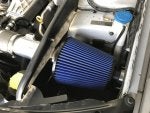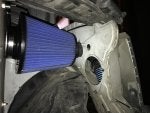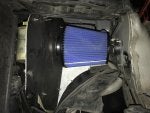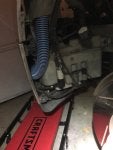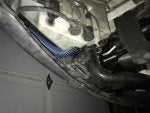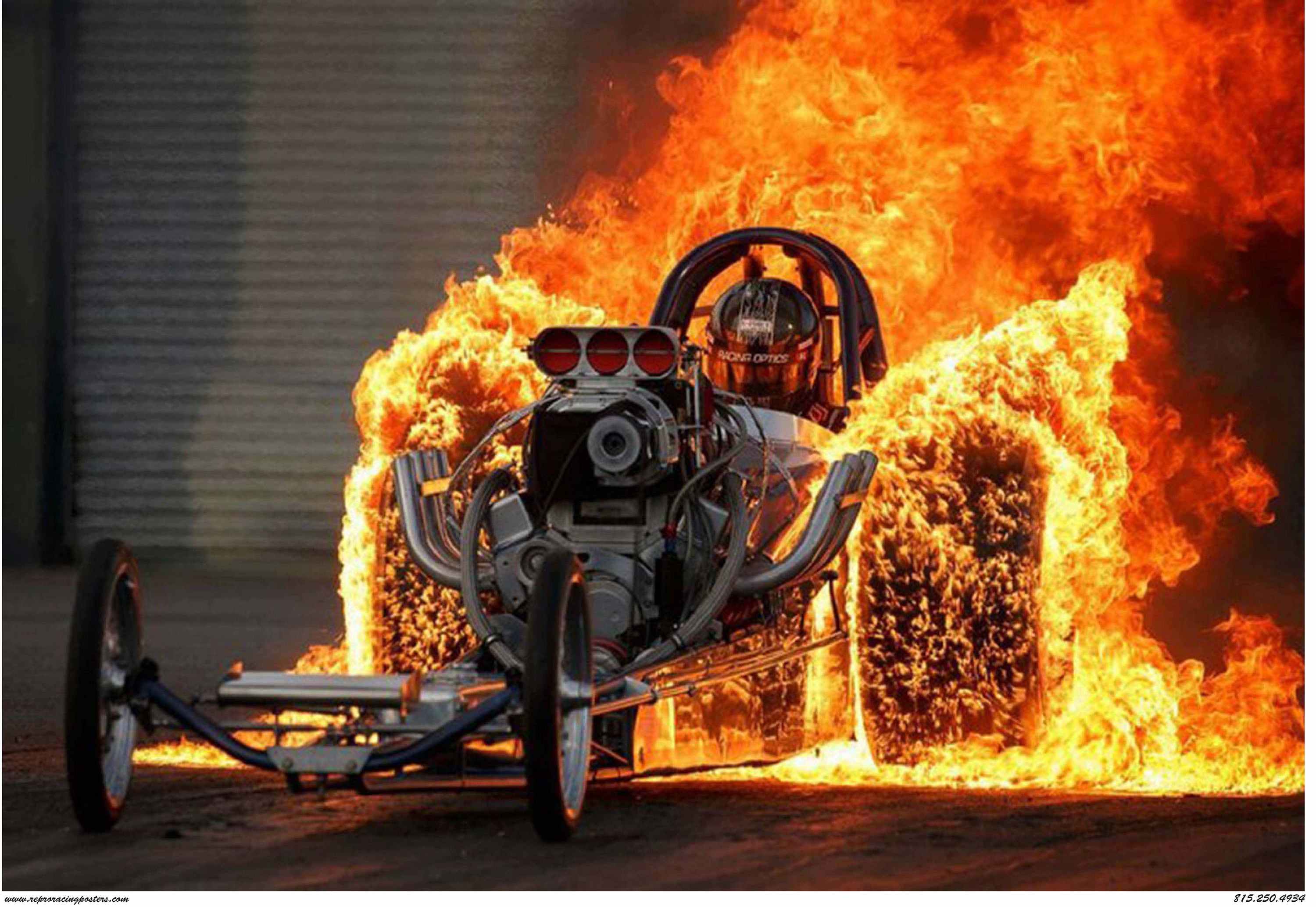If you don’t like the intake move on to a different thread. This is for someone who would like to do this.
Would you be so kind to set up a thread about this intake especially for those who have built an engine or two? We'd love to rave there but until then we've got no other choice than do it here.
I calculated using math, that with the stock air filter or any of the stock piping it was not getting the required amount of air to make use of my tune or small pulley.
I'd love to see these calculations. Did you actually include the effects of how a smaller pulley works in a supercharger?
#protip: Supercharger rotating faster but of a constant capacity = same amount of air but in less time = greater velocity of the air stream in the intake in given time = higher pressure in the combustion chamber = no reason for wider intake, since the volume is constant, it's the integral of the charge velocity that makes for delta pressure.
Ram air doesn’t have much effect going under highway speeds but when you’re moving at speed having cool air feeding directly into your intake will help performance. Cold air is more dense and that means you will make more power.
Sorry to piss on your parade, but your air is not any cooler.
My ram air intake is feeding directly into my cone filter so you’re wrong that it has no effect. I can hear the intake from the fog light.
Which proves exactly nothing, it's obvious that if you have an exposed filter, it will be noticeable.
I also think it looks way better than the stock setup which was designed to go off-road not for performance.
It's an
offroad luxury 4x4.
My setup maximizes the amount of whine you hear from the supercharger. If I have a supercharger on a car I’d like to hear it.
It's an offroad
luxury 4x4. Not a Hellcat from a ghetto.
And no, the exhaust is not stock. The only restriction in my exhaust is vibrant resonators. I have removed everything else and put an x pipe right before where the rear muffler used to be.
So you resigned from optimal scavenging by mixing the pulses of the banks for the noise.
I see a pattern here, solutions that are loud, but not exactly functioning. In traditional engine building the noise is a derivative of the power an engine makes. You give examples of trying to create power by making more noise, which doesn't really work in real life.
Apparently math didn't tell you the noise comes from a reversal of the pressure wave that inevitably happens in a cross plane crank V8 with an x-piped exhaust due to the odd firing order. This wave, to surprise of no one, does not help with exhaust gas velocity which is what one should be looking for in an exhaust. Actually, it slows the scavenging down. This makes some real sick noizez, stuff the whole ghetto admires, but reduces the efficiency of the exhaust system by creating unnecessary backpressure. Since a supercharged engine, as opposed to a turbocharged one, has exactly the same needs in exhaust department as a naturally aspirated one, backpressure is not welcome.
#protip: since the temperature of the exhaust gases in a system that long drops significantly between the headers and the exhaust tip, the daughter of maths, physics, will tell you that in order to keep the flow velocity your exhaust not only needs to be NOT x-piped, but also the diameter of the piping should gradually change in order to keep the given amount of exhaust gases at the same velocity while their temperature drops throughout the system (Boyle's law, expanded to ide
al gas equation, pV = nRT).
I remember when I drove it stock it would always go into limp home mode. Ever since putting a cone filter a couple years ago I have never had it go into limp home mode once. Coincidence? I think not.
The engine map compensates for unexpected air with throwing more fuel than necessary, nothing to see here,
You claim that you are able to create an overpressure situation without sealing the
airbox filter section of the intake you created. While the daughter of maths, (physics) teach us that it is really, really hard to create an overpressure in a non-sealed container, if this ram-air contraption actually worked (it doesn't) you'd reduce the wading depth of a Range Rover to less than half stock. Well, congratulations, but it seems to me you've picked the wrong car.
The stock intake is sealed, but it is not heat proof. The cheap plastic they used allows heat inside.
Doesn't matter. You've got an air-water intercooler which is the equalizer in this case. The heat-soaking of a 4.2 SC comes from lack of air movement around the heat exchanger (or a busted IC pump), not from the fact that the plastic airbox gets warm. Plastic has generally much lower thermal conductivity than metal, so as I said - the stock box is a non-issue. However your intake features roughly 170 square inches of metal pipe that has virtually no shielding from the engine heat and conducts this heat perfectly into the air running through it. And then (again, physics) you have a supercharger that heats the (already pre-heated) air to a temperature about 17% higher than the engine expects. And then...
And then you run it through stock A2W heat exchanger that does not work long-term even with the stock pulley.
#protip: what you should've done was to use a nice, sealed, low-heat-conducting container you already had (stock airbox), modify it to accommodate a "performance" filter (BTW your intake sensors will show gratitude for the "performance" of a random cone filter, I mean, this is not even a branded item, no K&N nor Green, nor Holley) and to include this big ass piping to the engine. This piping should be covered with gold foil, sleeved or at least wrapped in reflective heat tape or even a thermal bandage to avoid heat soak.
This all will do a fraction of what an uprated IC cooling pump would do. You want cool
compressed air not
cool ambient air because you just can not make a ram-air intake with heat-conductive piping drop your IAT by 100 F. Such uprated pump with perhaps a bigger (much bigger) heat exchanger will lower the intake charge temperature (sure, denser air = more air) and allow for igniting the appropriate amount of fuel while maintaining optimal ignition retard, which is crucial for making power. Or avoiding knocking, which is also quite useful.
![Image]()
![Image]()
![Image]()
![Image]()
![Image]()
![Image]()
![Image]()
![Image]()
![Image]()


